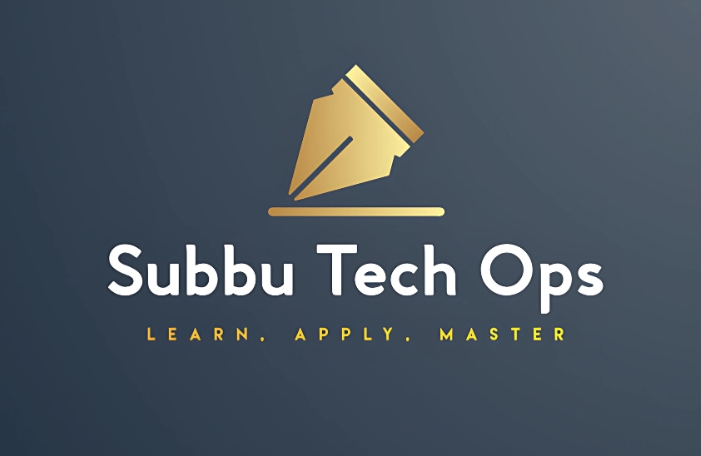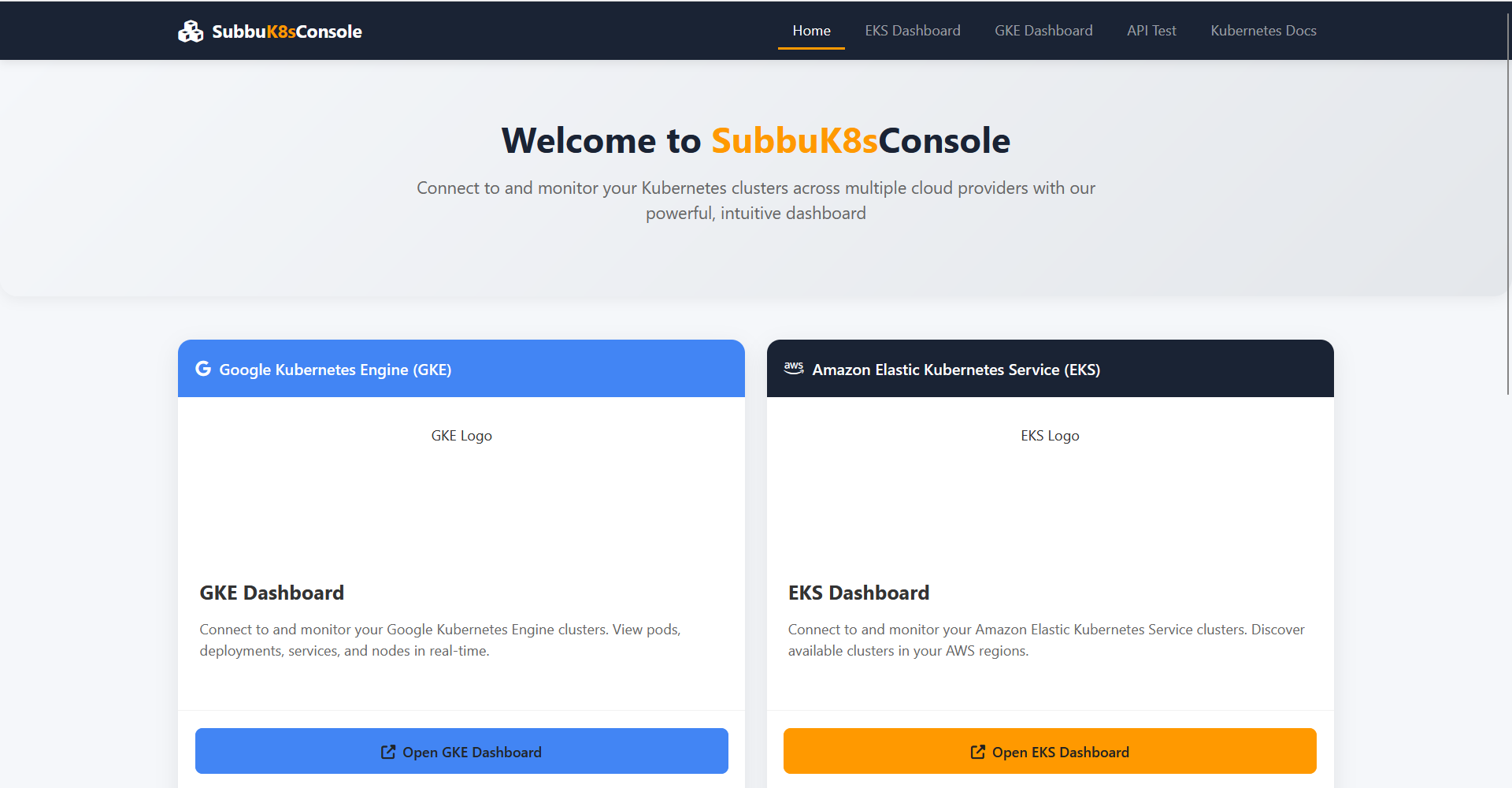Introduction
Kubernetes has become the go-to orchestration tool for modern cloud-native applications. However, managing clusters across multiple cloud providers like AWS EKS and Google Kubernetes Engine (GKE) can be complex. To bridge this gap, I built SubbuK8sConsole — a simple web-based Kubernetes dashboard that simplifies cluster management across AWS and GCP.
This blog will walk through its features, architecture, and deployment details.
🔗 GitHub Repository: SubbuK8sConsole on GitHub
Key Features 🌟
✅ Multi-Cloud Support: Manage and monitor both AWS EKS and GKE clusters from a single interface.
✅ Cluster Insights: View real-time information about nodes, pods, deployments, and services.
✅ API-Driven Architecture: Efficient interaction with AWS, GCP, and Kubernetes APIs.
✅ Secure & Scalable: Uses Kubeconfig, AWS Boto3, and Google Cloud SDK for authentication and communication.
✅ User-Friendly UI: Built with Bootstrap, HTML, and JavaScript for seamless navigation.
✅ Flask Backend: API-powered microservices for retrieving cluster data efficiently.
Component Breakdown
- Frontend Layer
- Built with HTML5, CSS3, JavaScript
- Responsive design using Bootstrap
- Handles user interactions
- Sends API requests to backend
- Renders cluster and resource information
2. API Layer (Backend)
- Flask-based Python web server
- Manages API endpoints
- Handles authentication and resource retrieval
- Interfaces with cloud providers
- Provides RESTful API for cluster management
3. Cloud Provider Connector
- Uses boto3 for AWS interactions
- Manages cluster connections
- Retrieves cluster metadata
- Generates dynamic kubeconfig
- Handles authentication methods
How It Works? (Data Flow) 🔄
Step 1: User Interaction
- The user accesses the SubbuK8sConsole via a web UI.
- They can select either AWS EKS or GKE clusters to connect.
Step 2: Backend API Communication
- The Flask API processes the user request and connects with either AWS Boto3 SDK or Google Cloud SDK.
- The Kubernetes Client fetches relevant cluster data from the Kubernetes API.
Step 3: Data Visualization
- The retrieved cluster details (nodes, pods, deployments, services) are displayed in the dashboard UI.
- The user can explore detailed cluster information interactively.
Architecture Overview 🏗️
The architecture of SubbuK8sConsole follows a modular design that enables scalability and flexibility across different cloud environments.
Basic-component-diagram:

Simplified-Component-Diagram:

Architecture:

API Workflow and Interaction Patterns
Cluster Discovery Workflow:

Cluster Connection Workflow:

Resource Retrieval Workflow:

API Endpoints Overview

Authentication Methods
1. AWS Credentials Authentication
- Direct AWS access key authentication
- Supports temporary session tokens
- Provides granular access control
2. AWS Profile Authentication
- Uses pre-configured AWS profiles
- Simplifies credential management
- Default profile support
Error Handling
The API provides comprehensive error responses:
- Detailed error messages
- Appropriate HTTP status codes
- Logging for backend diagnostics
Security Considerations
- Credential Management:
- Supports multiple authentication methods
- Temporary credential support
- No long-term credential storage
2. API Security
- CORS support
- Minimal persistent state
- Stateless resource retrieval
Deployment Considerations
- Supports containerized deployment
- Compatible with various hosting environments
- Minimal infrastructure requirements
Future Enhancements
- Multi-cloud support expansion
- Enhanced authentication mechanisms
- Advanced resource management features
- Persistent cluster connection state
- Real-time cluster monitoring
Getting Started
- Configure AWS credentials
- Install dependencies
- Start the application
- Discover and connect to clusters
- Explore Kubernetes resources
Troubleshooting
- Verify AWS credentials
- Check network connectivity
- Review application logs
- Ensure proper IAM permissions
How to Deploy SubbuK8sConsole? 🚀
- Clone the Repository:
git clone https://github.com/SubbuTechOps/python-k8s-console-ui.git
cd subbu-k8s-console
2. Install Dependencies:
pip install -r requirements.txt
3. Run the Flask Backend:
cd ./python-k8s-console-ui/backend
python app.py
4. Access the Dashboard:
Open your browser and navigate to:
http://localhost:8000
Application Images:





Listed Clusters:

Pods:



Deployments:

Services:


Nodes:

AWS Dashboard-Connect to Cluster:

Discover EKS Cluster:

API Test Console:

API Test Health:

API Test List Clusters:

API Test Discover Clusters:

API Test Connect to Cluster:

API Test List Pods:

Conclusion 🎯
SubbuK8sConsole makes Kubernetes cluster management effortless by providing a unified AWS EKS and GKE dashboard. With a simple UI, robust API architecture, and seamless cloud integration, this tool empowers DevOps engineers and cloud architects to monitor and manage their Kubernetes workloads efficiently.
🔹 Let me know what you think in the comments!
🔹 Feel free to contribute to the project if you’re interested.
🔗 GitHub Repository: SubbuK8sConsole on GitHub
For more insights into the world of technology and data, visit subbutechops.com. There’s plenty of exciting content waiting for you to explore!
Thank you for reading, and happy learning! 🚀


